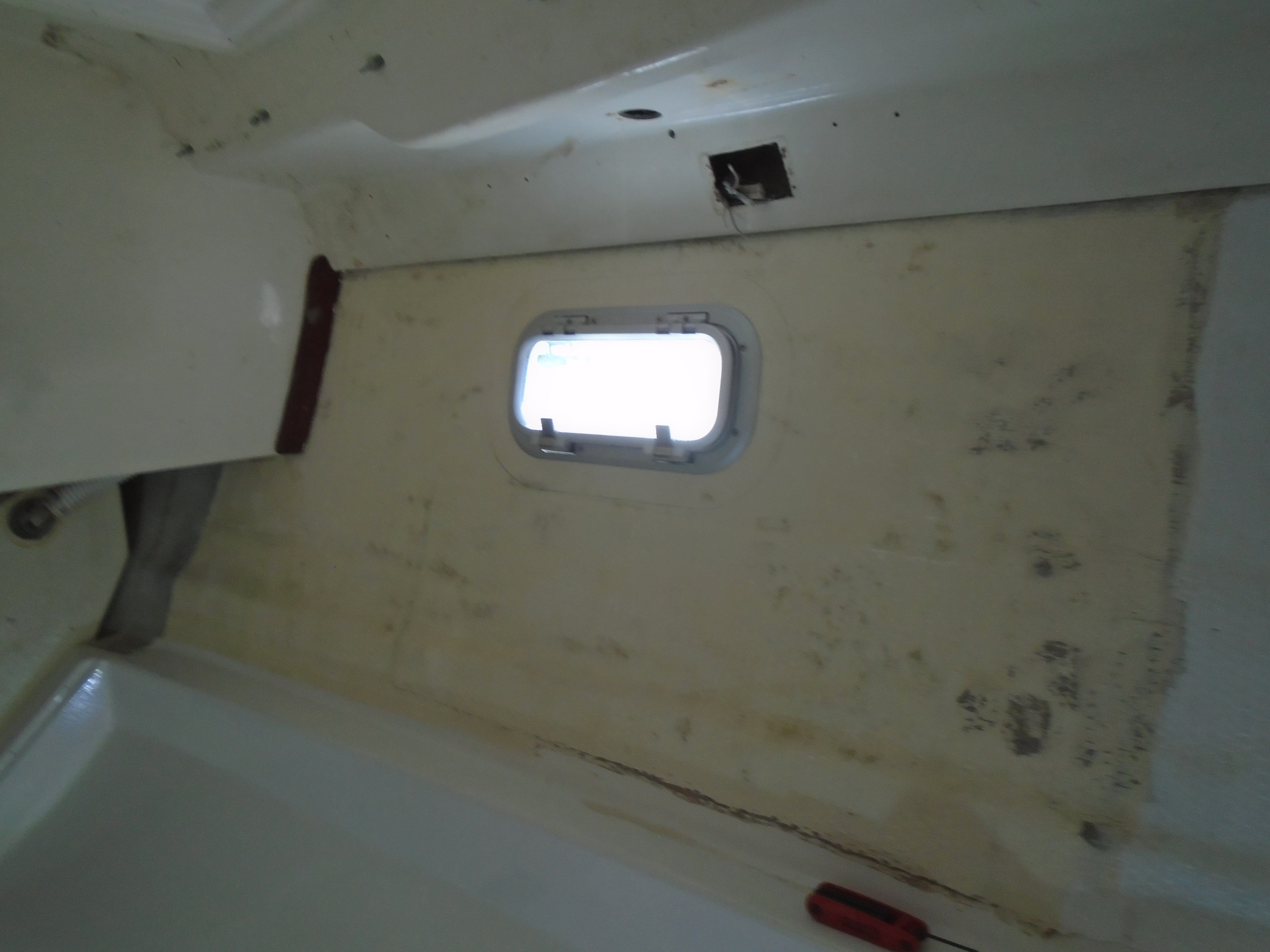Odds & ends:
Finally got a dry spell - unfortunately the heat has arrived! Midday work outside is nearly impossible, so I'm going out at first light and working until it's too hot, then going out again early evening until too dark to see what I'm doing.
Repairs on the stem are almost there - final sand tonite to check and if it looks good I'll get primer on it tomorrow.
After a few days of unbearable heat down below I broke down and bought an air conditioner. It fits on the bridge deck and blows in through the companionway. I couldn't get a very high BTU unit because I have to run a 75' extension cord to run it. But with a few fans running below it's bearable for all but a few hours a day. So -
Time to set aside repairs and install some upgrades! One complaint I have had about the boat is the ventilation in the aft cabin. The opening portlights open into the cockpit - not very useful for allowing breezes in. So my plan was to put some portlights in the hull sides. Lewmar Atlantic 30s to the rescue! I've been working up the install for a while now and had to deal with two potential issues. One, Lewmar says the mounting area has to be flat within 2mm. When I placed the portlight against the hull the curvature was just beyond this tolerance, so I figured I would have to fabricate something. The second issue is that ABYC recommends that in-hull ports (fixed or opening) should not protrude from the hull. They should be flush or recessed. I took a walk through the yard and looked at all the boats with in-hull ports. Seems to be about half have flush or recessed and half have the frame of the portlight outside the hull. Time to dig in a see which way is best.
I made up a bunch of templates for several scenarios:
Next up was to position a template against the inside of the hull. Then I drilled two test holes a half inch below the estimated upper edge of the opening. This was to check the position and level on the outside of the hull. With all looking good, I marked the hull and drilled the perimeter corners:
Next up, cutting big holes in the hull - intentionally! The handheld router worked well for this:
Now for the good news - the hull relaxed just a little around the hole, just enough to fall within the Lewmar tolerance limits. This helped a bunch since I don't need to spend a ton of time fabricating a window mount. I had already planned and made reinforcement plates for the hull anyway for this.
Portlight installed temporarily:
Clamping the flange in place pulled the hull sides just the little bit more I needed so I figured I could use the portlight in place to hold the hull sides in shape while I glassed in the reinforcement plates. Stay tuned!
Cheers,
Mark


























